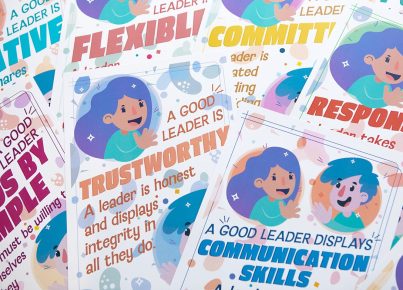Every May and June, millions of K-12 teachers quit their jobs, choosing to transfer to another school within their district, teach in another district, or leave the teaching field for good. Nine times out of ten, their decision is related to the effectiveness of the school’s principal. So, what things do principals do to make their teachers quit? Keep reading to find out.
Mistake 1: Setting inconsistent goals or expectations. Consider this scenario: You instruct teachers to have a zero-tolerance approach towards bullying, profanity, and fighting. However, when you become inundated with student referrals, you ask teachers to adopt a more relaxed approach. This will drive teachers crazy and convey the impression that you are unwilling to be tough on discipline. Your inconsistency makes their life a living hell, as it makes it harder for them to maintain order in their classroom. When they start burning out, they move on.
How can you avoid this situation? When you set expectations or goals for teachers, be sure to follow through. Being transparent and consistent with your expectations will make your employees feel secure. This will make your school building a more pleasant place to work.
Mistake 2: Putting people in the wrong roles. Let’s say you interview a teacher who was trained as a lower elementary school teacher. If you hire them to work in that capacity, and they make it known that the K-3 grade level is the area where they feel most comfortable, believe them. Don’t try to move them to upper-elementary because you did a poor job during the off-season hiring period. If you do, you will find that at the end of the year, ironically, they will be the ones moving, but they will be moving on.
How can you avoid this situation? Be transparent about the grade level, and subject area you are hiring an educator to teach in. If you think there might be a chance that they end up working in another grade or subject, let that be known. That way if you need to change their roles they will be more open to the idea, as they knew it would be a possibility.
Mistake 3: Failing to create a psychologically, safe school culture. Unfortunately, some schools are hostile environments. So if you notice teachers and staff members being overly agreeable or quiet during staff meetings, that’s a bad sign. When teachers fear that their ideas or constructive criticism will be met with retaliation, they tend to keep their mouths shut, unwilling to make themselves targets. In a psychologically unsafe school, teachers become less effective and fail to grow. Because of this, they move on.
How can you avoid this situation? Create a school culture where people feel comfortable sharing their ideas, opinions or constructive criticisms. This creates a psychologically, safe school culture.
Mistake 4: Creating a school culture that is too safe. In a school environment, a healthy amount of pressure is essential for educator growth. When teachers feel overly pressured to improve standardized exam scores, they lose sight of what is necessary, and are more prone to get results by any means necessary; even if it means cheating. On the other hand, if teachers feel no pressure at all, they may start to become complacent, which will stifle their professional growth. When educators cannot find meaning in their work or don’t feel like they are growing or making a difference, they move on.
How can you avoid this situation? Sure, you want to create a safe school environment, but you don’t want to create a culture where people say whatever is on their mind. Some things should be left unsaid, even if they are correct. Also, people need to feel a moderate amount of pressure to perform. If not, at least half of them will take advantage of the situation, performing at a level that requires the least amount of energy or effort. Teachers need to be held accountable for how their students perform, and only a school culture with high expectations can accomplish this.
What did I miss?



